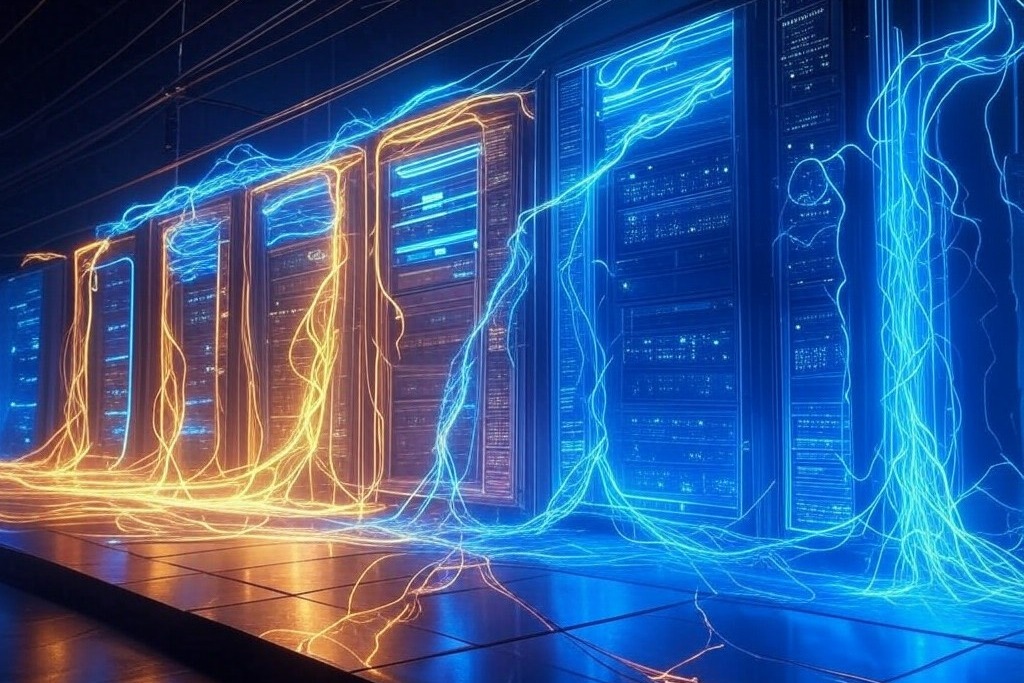
Let me paint you a picture that might shock you. Every time you ask ChatGPT a question, it’s not just consuming electricity — it’s drinking water. About 500ml of it for every 20–50 queries. That’s right, your AI assistant is quite literally thirsty for resources.
But this is just the tip of the iceberg. As someone who’s been deeply analyzing the latest 2025 Capgemini research on AI’s environmental impact, I need to share some disturbing findings that should make us all pause and think.
The Scale of the Problem: Bigger Than You Think
Imagine powering 5,000 American homes for an entire year. That’s the amount of electricity consumed just to train a single GPT-4-sized model. We’re talking about 51,772 to 62,319 MWh of electricity — and that’s before it even starts answering your questions.
Here’s what’s really keeping environmental scientists up at night:
- Skyrocketing Emissions Nearly half (47%) of organizations report increased greenhouse gas emissions in the past year, with an average spike of 6%. And guess what? 48% of them point directly to Generative AI as the culprit.
- The Data Center Dilemma By 2026, data centers will gobble up 1,000 TWh of electricity — equivalent to Japan’s entire electricity consumption. Let that sink in for a moment. One technology sector will consume as much power as the world’s third-largest economy.
- The Water Crisis Nobody’s Talking About Remember Virginia’s “data center alley”? Their water consumption shot up by 69% between 2019 and 2023. And that’s just one location. Scale that globally, and you’ll start to understand why water conservationists are raising red flags.
The E-Waste Tsunami Coming Our Way
But wait, there’s more. By 2030, we’re looking at an e-waste nightmare of epic proportions. Generative AI could generate between 1.2 to 5.0 million metric tons of e-waste — about 1,000 times more than what we produced in 2023.
Think about all those graphics cards and specialized AI hardware. Half of their greenhouse gas emissions come just from mining the rare earth elements needed to make them. We’re literally scarring the Earth to make our AI smarter.
The Corporate Blindspot
Here’s what really gets me: Only 12% of organizations actually measure their AI’s environmental impact. It’s like driving a car with no fuel gauge — you know you’re consuming resources, but you have no idea how much.
Why aren’t more companies measuring this? Well, 74% blame the lack of transparency from AI providers. But let’s be honest, that’s only part of the story. The real issue is priorities:
- 77% prioritize performance
- 74% focus on scalability
- A mere 20% consider environmental impact
Companies are essentially saying, “We want the benefits of AI, but we don’t want to know what it costs the planet.”
The Wake-Up Call
The situation has become so serious that 42% of organizations have had to completely revise their sustainability commitments because of Generative AI. Think about that — they had environmental goals, then AI came along and threw them all out the window.
What’s Being Done About It?
Some companies are starting to take action, implementing measures like:
Hardware Solutions:
- Switching to energy-efficient AI hardware
- Implementing proper e-waste management
- Ensuring hardware recyclability
Software Optimization:
- Using more efficient algorithms
- Fine-tuning existing models instead of training new ones
- Implementing smaller, more focused models
Infrastructure Changes:
- Moving to green data centers
- Transitioning to renewable energy sources
- Utilizing edge computing to reduce data center load
Usage Optimization:
- Monitoring and reporting AI usage
- Implementing query optimization
- Processing data in batches for better efficiency
The Path Forward
Let me be straight with you — we’re at a critical juncture. The AI revolution is unstoppable, but its environmental impact isn’t set in stone. We need to make choices now that will determine whether AI becomes an environmental disaster or a sustainable tool for progress.
What You Can Do:
- Be Mindful of Your AI Usage Think twice before running multiple iterations of the same query. Remember, each interaction has an environmental cost.
- Support Sustainable AI Initiatives Look for and support companies that prioritize environmental considerations in their AI development.
- Demand Transparency Ask AI providers about their environmental impact. The more users demand this information, the more likely companies are to provide it.
- Stay Informed Keep up with the latest developments in sustainable AI. The technology is evolving rapidly, and so are the solutions to its environmental challenges.
The environmental cost of AI isn’t just a technical problem — it’s a challenge that affects all of us. Every query, every model, every bit of training data adds up to a significant environmental impact. But here’s the good news: we’re not powerless in this situation.
By understanding the problem and taking action now, we can help shape a future where AI powers progress without compromising our planet’s health. The question isn’t whether we’ll continue to use AI — it’s whether we’ll use it responsibly.
What are your thoughts on this? Have you considered the environmental impact of your AI usage? Share your perspectives in the comments below — I’d love to hear how you’re thinking about this crucial issue.
Remember, every small action counts. The next time you’re about to ask ChatGPT a question, think about whether you really need to. Sometimes, the most environmentally friendly query is the one you don’t make.
